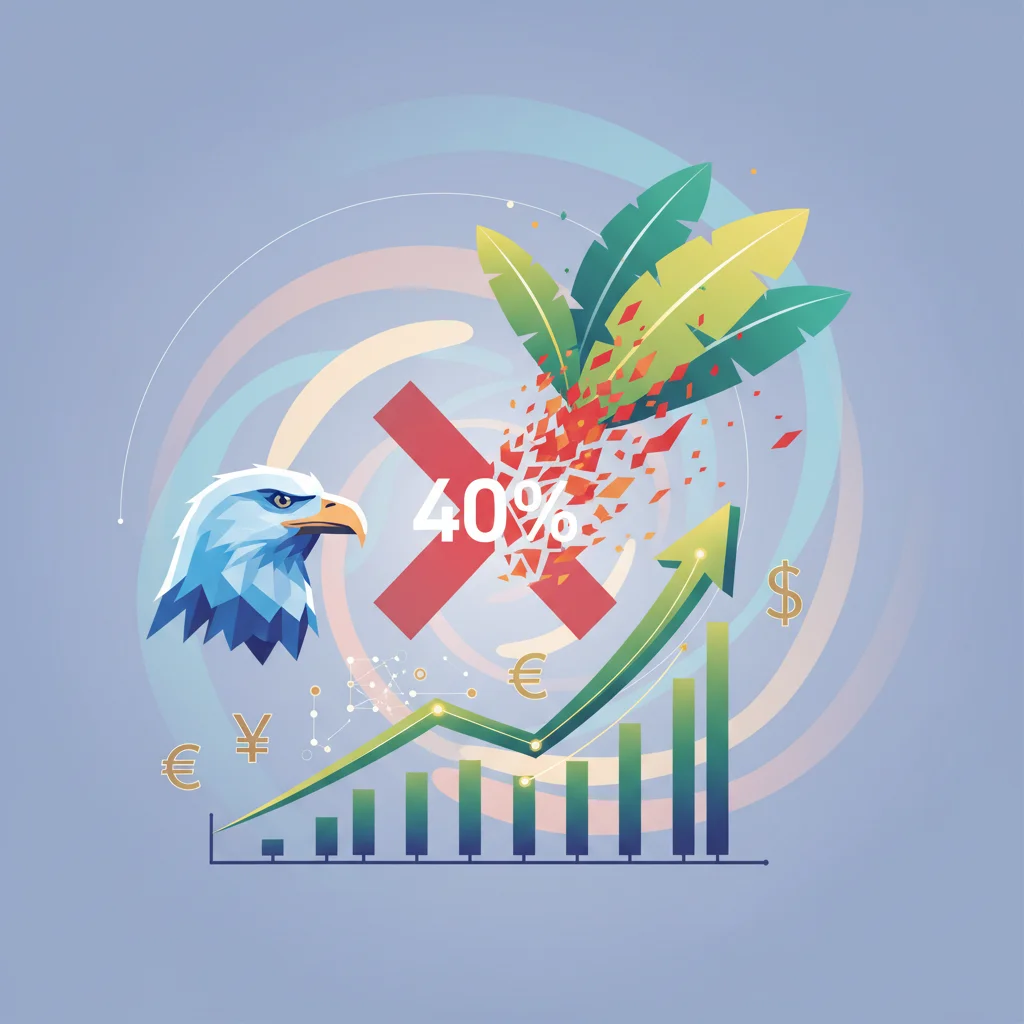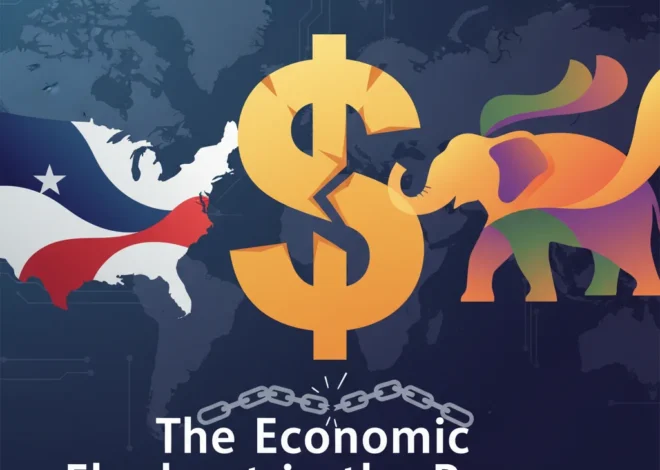
Beyond the Headlines: Why the U.S. Just Scrapped a 40% Tariff on Brazilian Imports and What It Means for Your Portfolio
In a move that sent quiet but significant ripples through the worlds of international trade, finance, and economics, the White House has officially lifted a hefty 40% tariff on certain Brazilian food products. The administration cited “initial progress” in trade negotiations with Brasília and, perhaps more tellingly, a strategic effort to combat rising discontent over the cost of living at home. While the announcement might seem like a niche adjustment in a complex global trade web, it is a powerful indicator of shifting economic priorities and presents a fascinating case study for investors, business leaders, and anyone tracking the health of the global economy.
This decision is not merely a diplomatic handshake; it’s a calculated maneuver at the intersection of macroeconomic pressure and geopolitical strategy. On one hand, it’s a direct response to the persistent sting of inflation that has squeezed American households. On the other, it’s a chess move aimed at strengthening ties with a key South American partner. Understanding the full scope of this policy shift requires us to look beyond the surface, analyzing its historical context, its immediate impact on the stock market and various sectors, and its long-term implications for the future of trade in an increasingly complex world.
The Anatomy of a Trade Barrier: Deconstructing the 40% Tariff
To grasp the significance of removing this tariff, we must first understand what it was and why it was implemented. A tariff is essentially a tax imposed on imported goods, designed to make them more expensive. The goal is often to protect domestic industries from foreign competition, generate government revenue, or exert political leverage over another country. In recent years, tariffs have become a prominent tool in U.S. economic statecraft.
The tariffs in question were part of a broader, more protectionist trade posture that characterized the previous administration’s approach to global commerce. These measures often targeted specific industries and countries, aiming to rebalance what were seen as unfair trade relationships. While the original Financial Times article points to “food products,” this move is part of a larger tapestry of U.S.-Brazil trade discussions that have historically included contentious items like ethanol, steel, and agricultural goods.
The impact of a 40% levy is substantial. It can effectively price a foreign product out of the market, forcing American importers and businesses to seek domestic alternatives (which may be more expensive or less available) or to absorb the cost, passing it on to consumers. Below is a simplified look at the products and sectors most affected by this type of trade friction between the two nations.
| Category | Examples of Key U.S.-Brazil Trade Products | Typical Impact of Tariffs |
|---|---|---|
| Agricultural Goods | Soybeans, coffee, orange juice, beef, sugar, ethanol | Increased prices for U.S. consumers and food manufacturers; potential for retaliatory tariffs from Brazil on U.S. goods. |
| Industrial Goods | Steel, aluminum, aircraft components | Higher costs for U.S. construction and manufacturing sectors; disrupts integrated supply chains. |
| Consumer Products | Footwear, textiles, processed foods | Directly raises prices on retail shelves, contributing to consumer price inflation. |
Removing this barrier is a clear signal of a strategic pivot, driven by a complex interplay of domestic and international pressures.
The Trillion-Dollar Question: How European Courts Are Reshaping the Future of Energy Investing
A Two-Pronged Strategy: Easing Domestic Pain and Courting a Global Partner
The White House’s rationale for this decision reveals a dual focus: addressing economic challenges at home while simultaneously advancing foreign policy objectives. These two goals are deeply intertwined.
1. The Battle Against Inflation at Home
The most pressing domestic issue cited is the “discontent over the cost of living.” Inflation has been a dominant theme in the U.S. economy, eroding purchasing power and putting immense pressure on households and businesses. According to the Bureau of Labor Statistics, the Consumer Price Index (CPI) has shown significant increases over the past few years, with food prices being a major contributor.
Tariffs are a direct accelerant of inflation. By artificially increasing the cost of imported goods, they create a ripple effect throughout the supply chain. A 40% tariff on Brazilian food products means that U.S. importers pay more, distributors pay more, and ultimately, the consumer at the grocery store pays more. By removing this tariff, the administration hopes to introduce less expensive products into the U.S. market, increasing supply and fostering price competition. This is a classic economics lever to pull when trying to cool an overheating price environment. It’s a targeted measure aimed at providing tangible relief, however small, to the American consumer.
2. The Diplomatic Dance with Brasília
Simultaneously, this move is a significant diplomatic gesture. Brazil is the largest economy in Latin America and a crucial strategic partner for the United States. The reference to “initial progress in trade talks” suggests this tariff removal is a concession—a show of good faith intended to unlock further cooperation on a wider range of economic and political issues. Strengthening the U.S.-Brazil trade relationship can yield benefits in areas like regional security, environmental policy, and creating a counterbalance to other global powers’ influence in the hemisphere.
This action demonstrates a shift towards a more traditional, diplomacy-first approach to trade, where tariffs are not just punitive measures but are used as bargaining chips to achieve broader strategic aims. This is a crucial distinction for anyone involved in international finance or business, as it signals a more predictable, albeit still complex, policy environment.
Market Ripples: What This Means for Your Investments and Business Strategy
Policy shifts in Washington and Brasília don’t stay there; they reverberate through the stock market and corporate boardrooms. For astute investors and business leaders, this tariff removal creates both opportunities and risks.
Impact on Investing and Trading
The most immediate effects will be felt in specific sectors. Investors should be watching the following:
- Brazilian Agribusiness: Companies in Brazil that produce and export the affected food products are the clearest winners. Their goods are now 40% more competitive in the U.S. market, which could lead to a significant boost in revenue and profitability. This could positively impact their stock market performance.
- U.S. Food Producers & Processors: For American companies, this is a mixed bag. Those who use Brazilian ingredients will benefit from lower input costs, potentially boosting their margins. However, domestic producers of competing products will face intensified competition.
- Logistics and Shipping: Increased trade volume between the U.S. and Brazil could be a boon for shipping lines, freight forwarders, and logistics companies that operate on these routes.
- Emerging Market ETFs: For those investing in broader emerging market funds, this signals a potentially more favorable trade environment, which could reduce political risk and encourage foreign investment in Brazil.
This event underscores the importance of geopolitical analysis in modern trading and investing. A single policy announcement can reshape the competitive landscape for entire industries overnight.
The Paradox of India's Growth: Why a Booming Economy is Begging for a Spending Spree
Implications for Business and Finance
For business leaders, particularly those with international supply chains, this is a moment to reassess. Companies that had previously shifted away from Brazilian suppliers due to the high tariffs may now find it economically viable to return. This highlights the need for supply chain agility and the ongoing evaluation of sourcing strategies based on the shifting sands of trade policy. The world of international banking and finance facilitates these shifts, providing the trade finance, letters of credit, and currency exchange services necessary to re-route billions of dollars in commerce.
The Bigger Picture: Trade, Technology, and the New Global Economy
Stepping back, this tariff decision fits into a much larger narrative about the evolution of the global economy. We are moving beyond a simple binary of “free trade vs. protectionism” into a more nuanced era of “strategic trade,” where policy is surgically applied to achieve specific economic and geopolitical goals.
This new era is also being shaped by technology. The rise of financial technology, or fintech, is revolutionizing how international trade is conducted. Cross-border payment platforms, digital currency solutions, and AI-powered risk analysis tools are making it easier and faster for businesses to adapt to policy changes like this one. A U.S. importer can now source, finance, and pay for a shipment from Brazil with unprecedented speed and transparency, thanks to innovations in fintech.
Furthermore, technologies like blockchain are poised to solve some of the oldest challenges in trade. For food imports, blockchain offers the potential for an immutable, transparent record of a product’s journey from a farm in Brazil to a shelf in the United States. This enhances food safety, combats fraud, and provides consumers and regulators with a level of trust that was previously impossible. As trade relationships are recalibrated, the underlying technological infrastructure of that trade is being rebuilt with greater efficiency and security in mind. This integration of financial technology is no longer a footnote; it is central to the future of global commerce.
The European Paradox: Why Stronger Nations Might Build a Stronger Union
Conclusion: A Small Step with Large Implications
The decision to lift the 40% tariff on certain Brazilian food products is far more than a simple administrative adjustment. It is a microcosm of the complex forces shaping our world: the domestic struggle with inflation, the intricate dance of international diplomacy, and the relentless march of technological innovation.
For consumers, it offers the potential for modest price relief. For the financial world, it provides a clear lesson in how policy shifts can create targeted investment opportunities and risks, impacting everything from the stock market to banking operations. For business leaders, it is a reminder that in today’s global economy, geopolitical awareness and supply chain flexibility are paramount. This single move, born from a confluence of economic pressure and strategic opportunity, serves as a powerful illustration of the interconnectedness of modern economics and finance, and it will be closely watched as a potential harbinger of trade policy to come.


